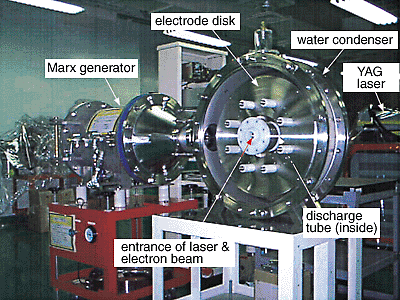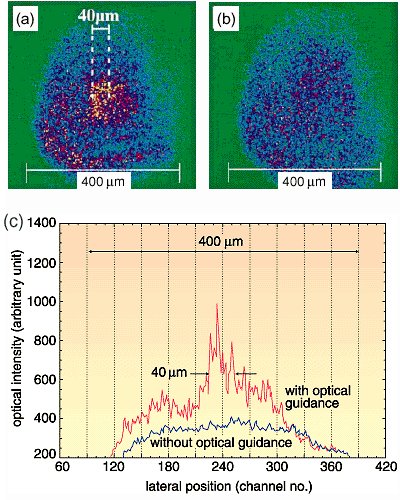Charged particle acceleration by strong electric fields due to laser-matter interactions excites special attention because large facilities for particle accelerators can be made marvelously compact. We have started a study to correctly time the injection of electrons into a wakefield induced by short-pulse laser-plasma interaction, in order to realize electron acceleration in the direction of laser propagation. An ultra-short pulse of a focused terrawatt laser interacts with plasma consisting of mutually oscillating electrons and ions and makes a wakefield with a large amplitude. This is similar to the wake that ships leave on the surface of the water. If placed in such a wakefield (high acceleration gradient), charged particles are accelerated, but only within that focused laser spot. Methods for extending the propagation distance of intense pulses have been studied, and most of them utilize the self-channeling effect of the TW laser, giving a maximum optical guidance length of 1-2 mm.
We have proposed a new method of optical guidance in which a plasma channel for intense ultra-short laser guiding is preformed by Z-pinch discharge. The method allows us to easily produce a channel length of about 10 cm for a wide range of densities. With the apparatus shown in Fig. 4-4, we succeeded for the first time in observing an intense pulse laser (pulse width: 90 fs, peak power: 2.2 TW, focused diameter: 40 µm) guided over 2 cm. Our proposal for a new method of making channels which can be further scaled up was thus proved and has contributed significantly to the realization of laser-plasma accelerators. |

